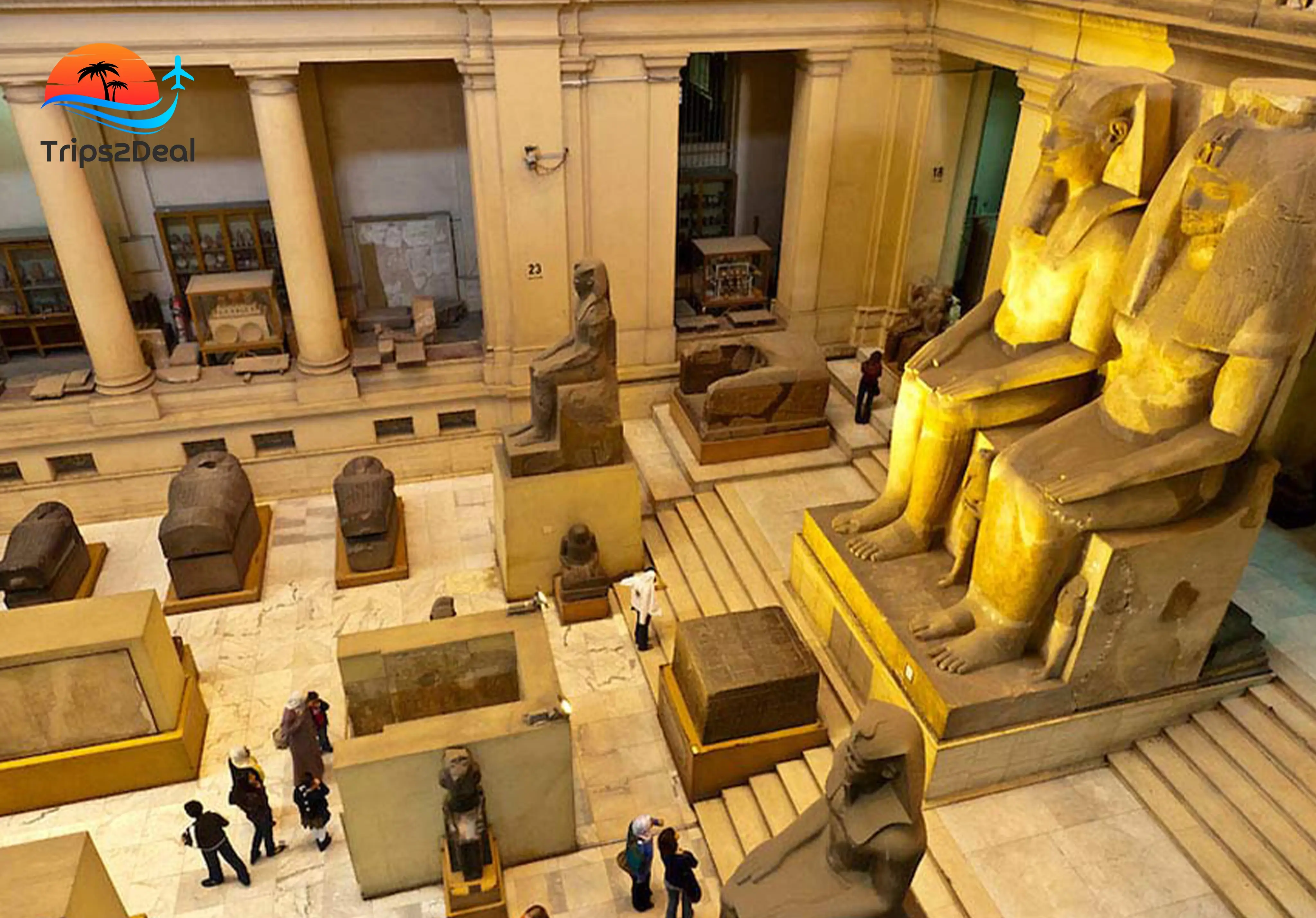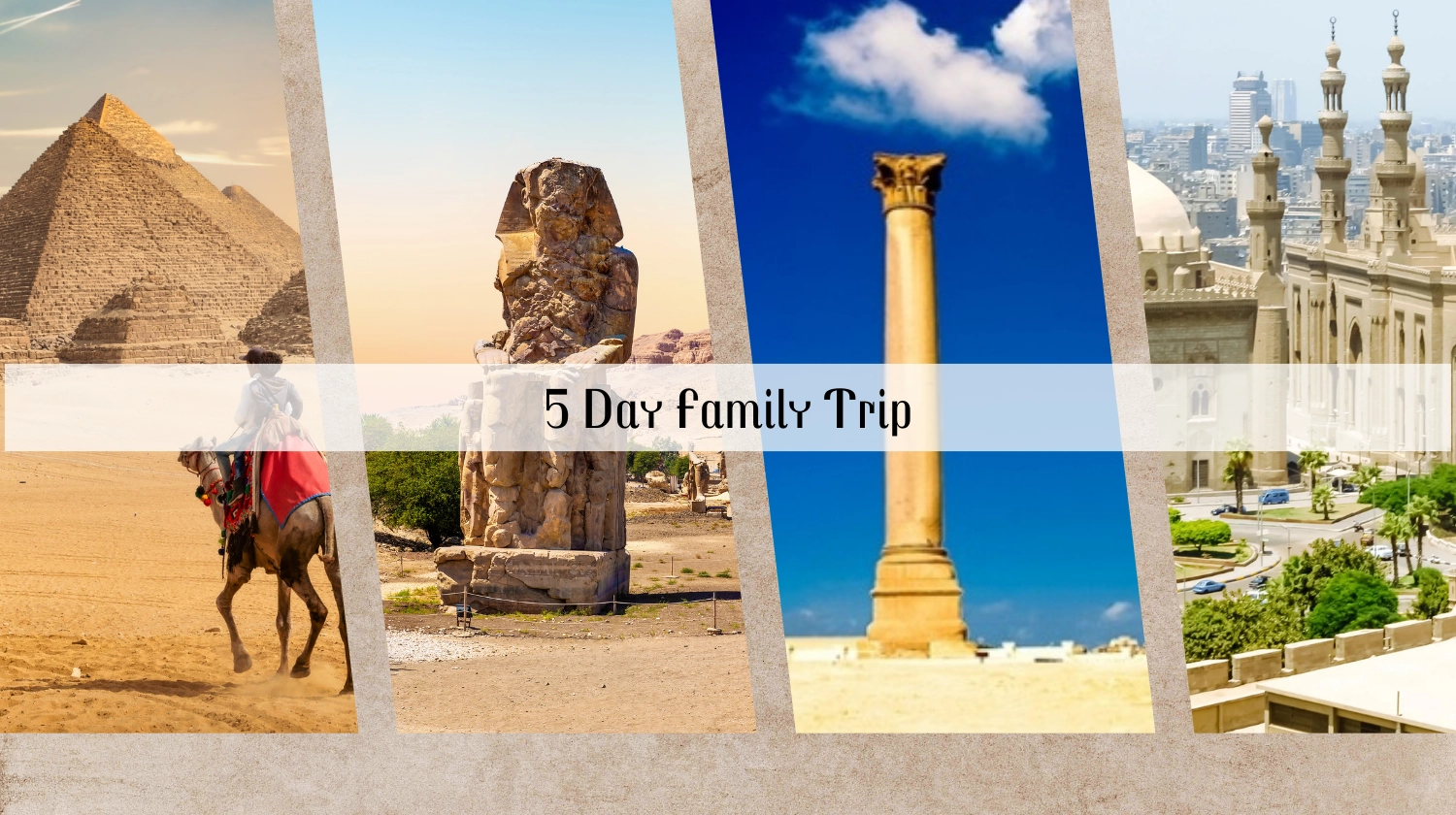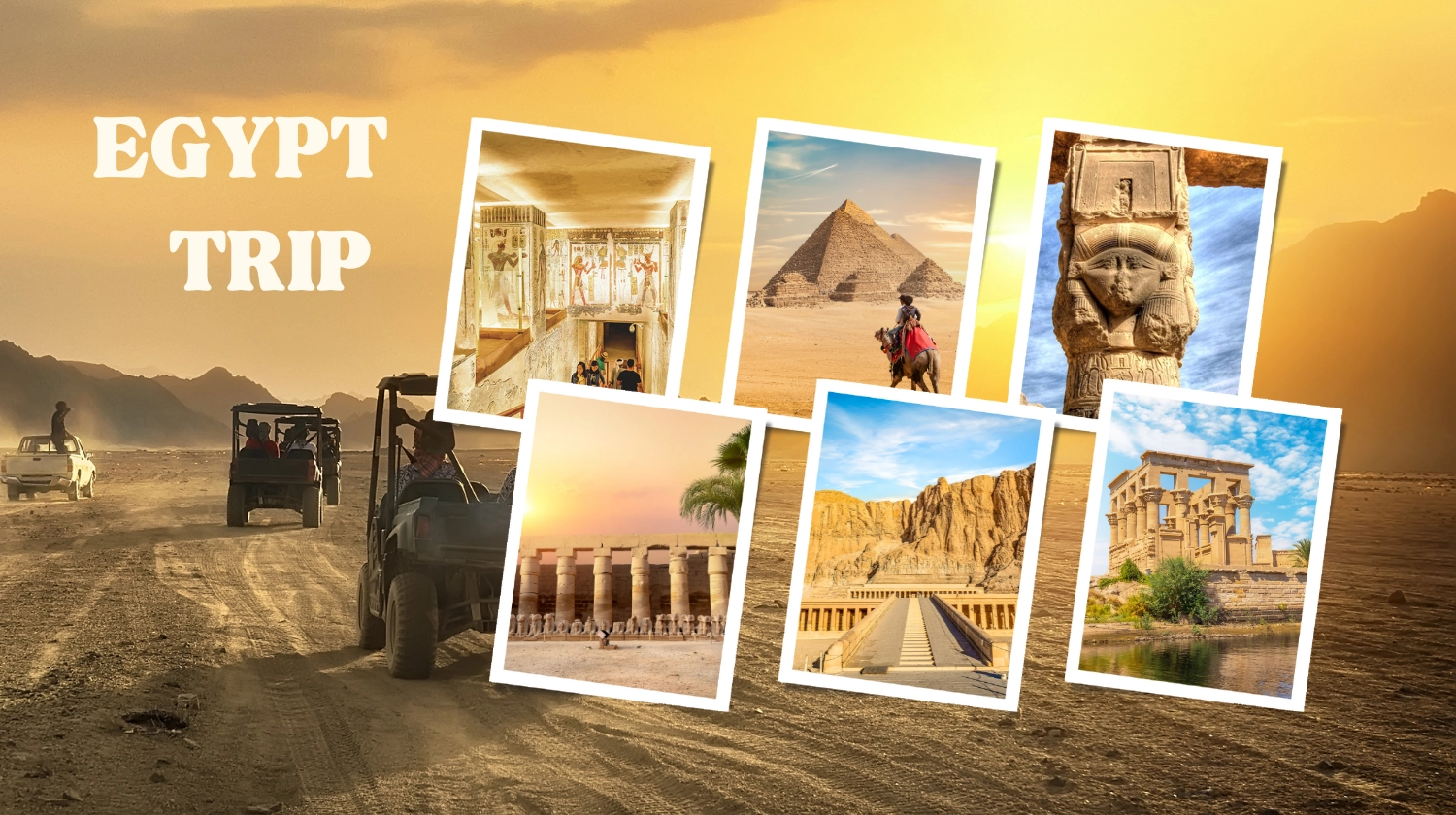Blogs

Top 25 Ancient Egyptian Symbols ( Meaning, Explanation and Facts )
Table of Contents
- 1. Ankh
- 2. Eye of Horus (Wedjat)
- 3. Djed
- 4. Scarab Beetle
- 5. Shen Ring
- 7. Was Scepter
- 8. Ouroboros
- 9. Feather of Ma’at
- 10. Ka
- 12. Akhet
- 13. Lotus Flower
- 14. Papyrus
- 15. Crook and Flail
- 16. Tyet (Isis Knot)
- 17. Deshret
- 18. Hedjet ( The White Crown
- 19. Pschent
- 20. Sphinx
- 21. Ibis (Thoth)
- 22. Falcon (Horus)
- 23. Vulture (Nekhbet)
- 24. Cobra (Uraeus)
- 25. Ra (Sun Disk)
For centuries, explorers, historians and travelers have been enchanted by ancient Egypt with its colossal pyramids, secret tombs and enduring worship places. Meanwhile, they also explore and are surprised by the ancient Egyptian Symbols as well. These are not mere remnants; they were effective tools for communication with or invocation to gods. It is a civilization whose grandeur lies not just in the magnificence of its monuments but also in the wealth of symbolism each icon and symbol carries reflecting on their culture, beliefs and way of life.
During your visit to Egypt, while exploring the Valley of Kings, cruising down the Nile or spotting at Sphinx in amazement - you will encounter these symbols engraved into rock surfaces, painted on walls and depicted in artifacts. Knowing them better will bring more meaning into your experience making you feel closer to the past of this country spiritually as well as historically.
There are more than 700 ancient Egyptian symbols but, In this post you will explore the top 25 symbols connecting them with their meanings, historical background, and roles played by certain characters within these symbols. If you are interested in ancient civilizations especially Egypt or if you are planning to go to Egypt soon then this guide will help you unlock a lot about one of the oldest mysterious civilizations worldwide. Come along as we unravel the mysteries behind these powerful symbols whose influence continues undiminished even today.
1. Ankh
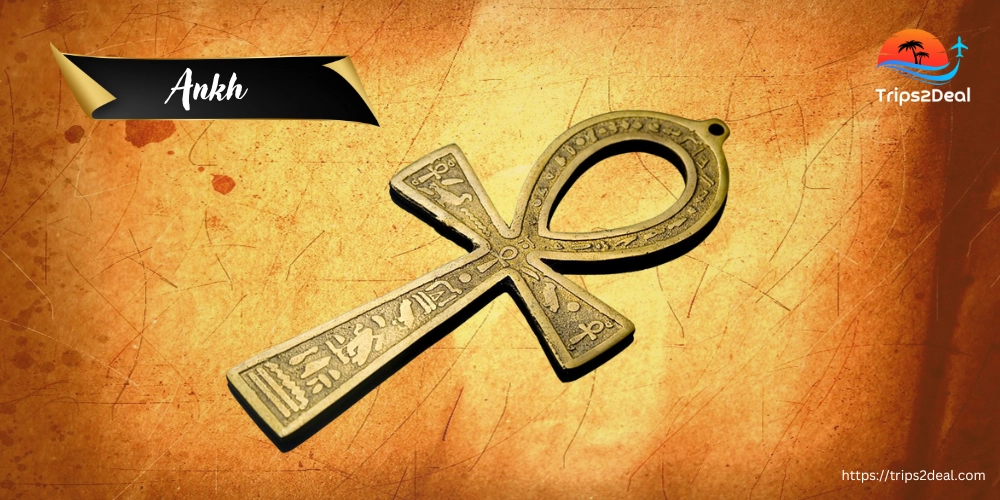
- Meaning: The Ankh symbol represents life, immortality, and the universe.
- Explanation: It was often referred to as the key of life; it was thought to hold the secret to eternal life, hence gods and pharaohs were depicted holding it in their hands. As such, it stood for their divine authority and connection with the afterlife.
- Fact: Frequently, the Ankh was placed in tombs and temples as an amulet that would ensure a safe journey into the afterlife.
2. Eye of Horus (Wedjat)
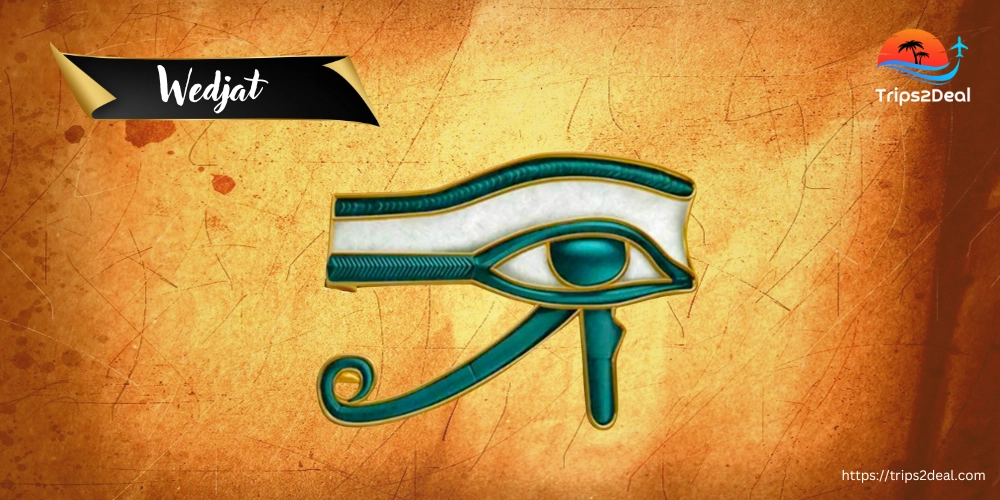
- Meaning: The eye of Horus means healing, protection, and restoration.
- Explanation: This powerful sign which represents one eye of the Falcon god Horus banished evil spirits while effecting recuperation. In times of physical or spiritual illness, they believed it would restore equilibrium and make things whole again.
- Fact: Sailors painted the Eyes of Horus on their ships so as to protect them during voyages because they believed that it prevented storms among other dangers.
3. Djed
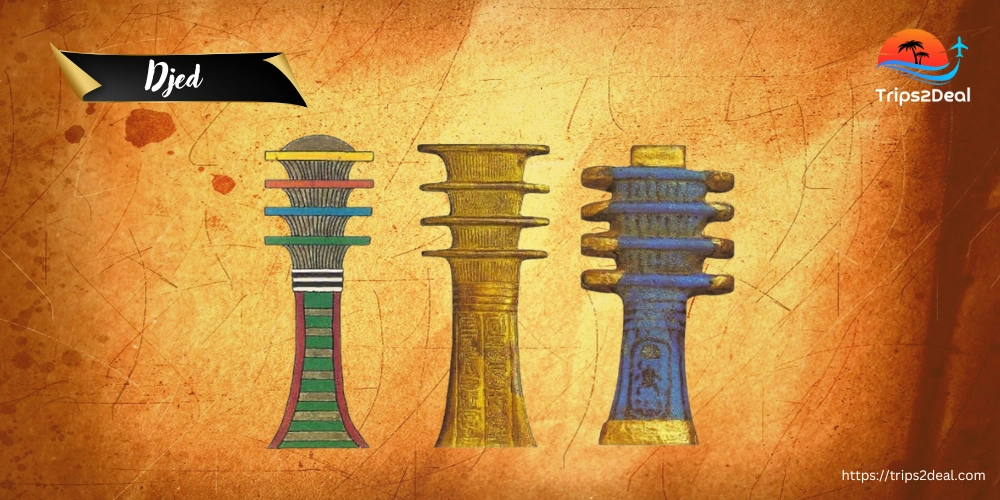
- Meaning: Djed pillar represents Osiris’, god’s backbone stability or strength
- Explanation: There are rituals through which pharaoh resurrects with continued power in the afterlife. For example, Djed was used as a formula that ensured the resurrection of the pharaoh as well as for maintaining his vigor continuously in the afterlife since he died on a regular basis.
- Fact: During the annual ritual “Raising of Djed,” this is where a new cycle began at every year’s end and symbolized the renewal of the king's authority.
4. Scarab Beetle
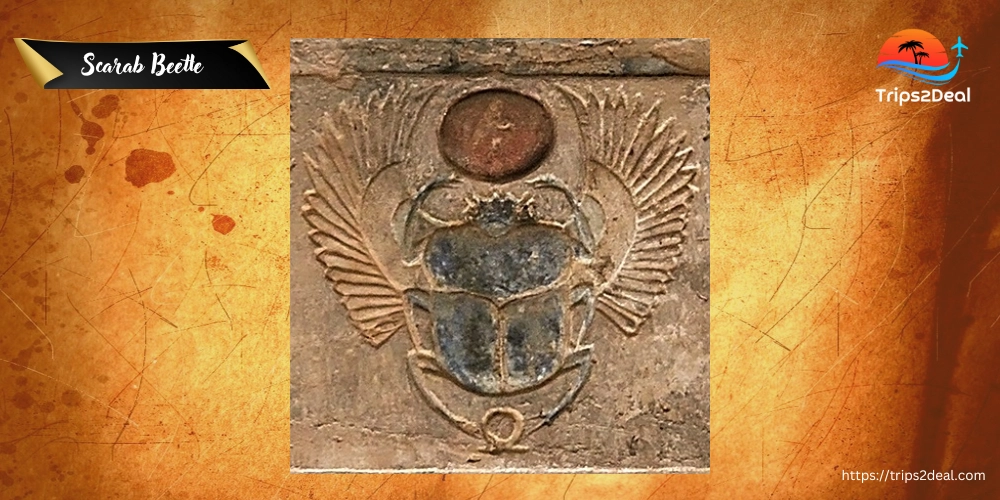
- Meaning: The Scarab beetle depicts the transformation resurrection cycle
- Explanation: The Scarab beetle which is associated with the sun roller god Khepri signifies the birth-death-rebirth process It found fame as a protective device against evil influences but also ensures rebirth into another world. General information can be put here about scarabs this way. These charms acted like protective shields over deceased hearts by using them during mummification knowing very well that when going to heaven the heart is a very vital organ that cannot be destroyed.
- Fact: It was common for scarab amulets to be placed on the chest of a mummy to protect it and its spirit as it went through the world of the dead.
5. Shen Ring
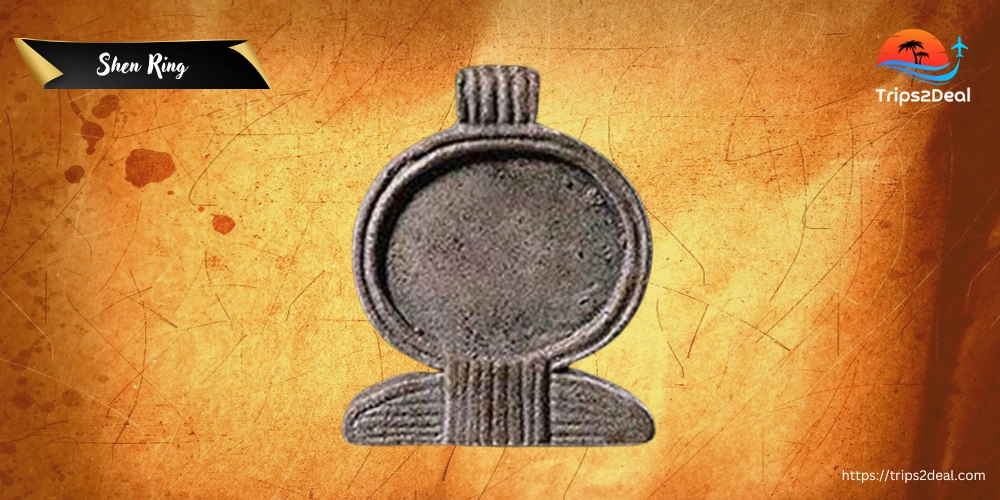
- Meaning: The Shen ring means eternity and protection.
- Explanation: A line under a circle depicts the constant life cycle associated with this ring. They were commonly held by gods who used them to safeguard the lives of pharaohs.
- Fact: Royal cartouches often had Shen rings included in them that enclosed their names, so that they would rule forever and be protected.
6. Cartouche
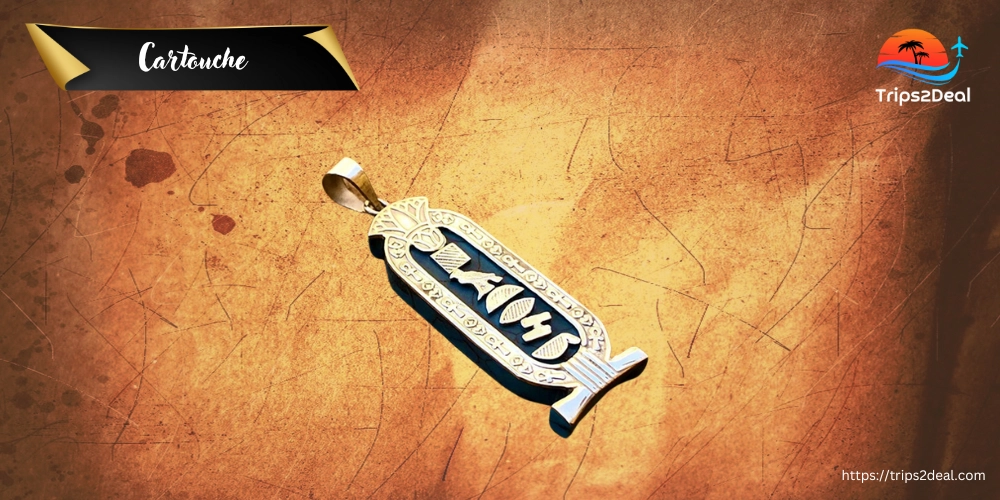
- Meaning: The royal symbol of authority and protection is the Cartouche.
- Explanation: A Cartouche is a frame resembling an oval that contains the names of pharaohs. The names are framed in such a way as to show their importance and divine protection. This means that it was believed that for eternity the cartouche protected the name of the pharaoh ensuring that even after death his true identity would still be known.
- Fact: In addition to being engraved on tombs, monuments, and jewelry, this symbol often emphasized the eternal aspect of the ruler’s name alongside divine protection.
7. Was Scepter
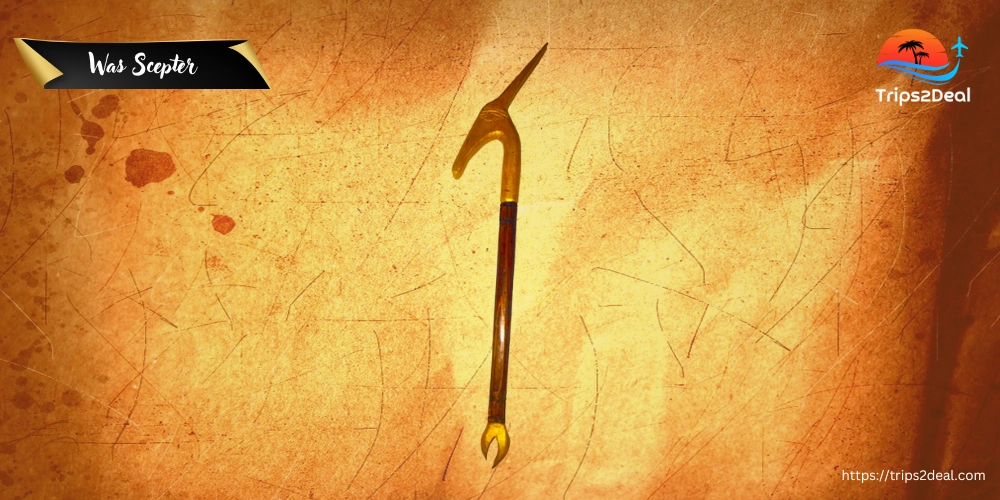
- Meaning: Power, dominion, and control are considered as the meaning of Was Scepter.
- Explanation: The scepter is a long staff with an animal head which gods and pharaohs carried as a sign of authority. It represents the power to rule In society or maintain order within it; this attribute is often depicted in the hands of deities like Anubis or Set.
- Fact: It was frequently put in tombs conveying supernatural strength necessary for one to find his/ her way through life hereafter.
8. Ouroboros
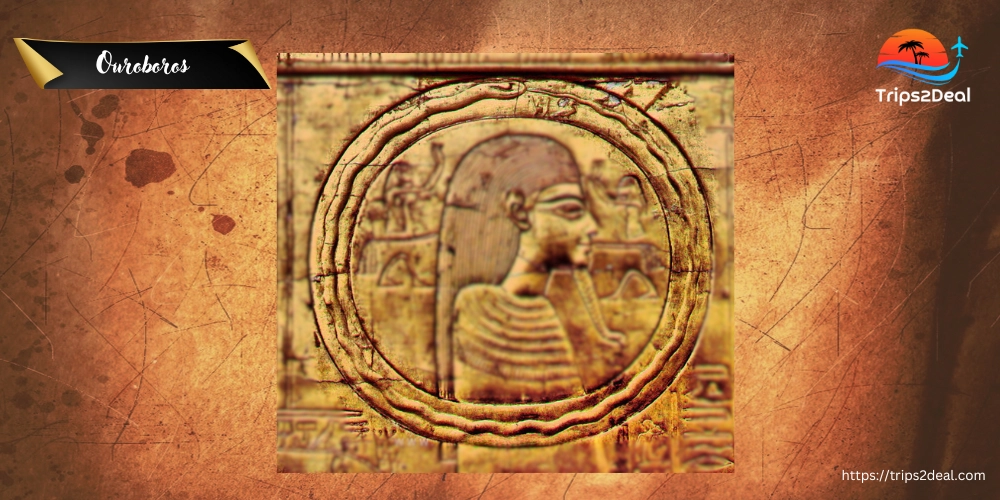
- Meaning: The Ouroboros signifies an endless life cycle revolving around birth death and rebirth constantly
- Explanation: By biting its own tail as depicted in most artworks, the Ouroboros take shape resembling different serpents or dragons which represents cyclic nature whereby there are beginnings out of endings. It was a powerful emblem of perpetuation together without limit thus usually identified with the sun and daily movement from night to day time.
- Fact: As used in Egyptian mortuary literature it stood for eternal modification towards existence mainly because this pertained to the spirit’s path inside the afterlife.
9. Feather of Ma’at
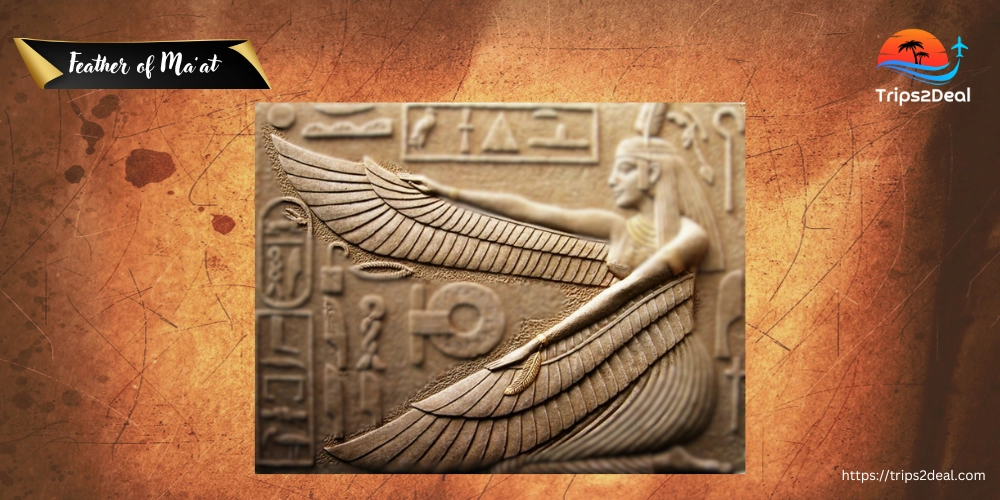
- Meaning: Truth, justice, and cosmic balance are what Feather of Ma’at symbolizes
- Explanation: The goddess Ma’at wore a feather which was called the Feather of Ma’at which became a central symbol used during judgmental periods of the dead. It was also used to measure or balance the hearts of the deceased against its lightness which determined whether they were eligible to enter the afterlife thus representing truth and moral righteousness.
- Fact: The Feather of Ma’at was depicted in the renowned “weighing of heart” scene in the Book of Dead to underscore its importance during afterlife judgment.
10. Ka
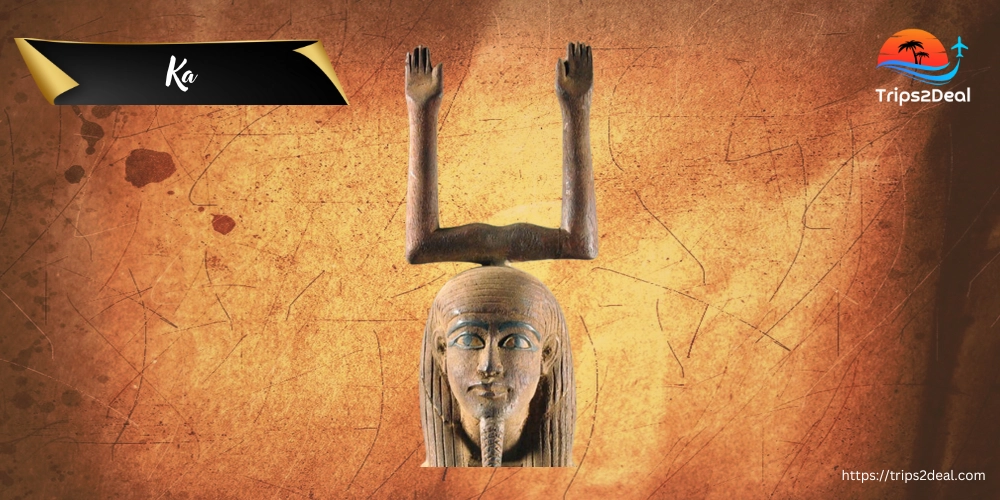
- Meaning: Ka signifies one’s spiritual essence/vital force.
- Explanation: The Ka was regarded as a person’s life force or spirit that continued existing even after death. It depended on sustenance through offerings and rituals for it to flourish appropriately in the world beyond. This symbolized Egyptian belief in life after death and the essentials associated with mortuary provision.
- Fact: To maintain ties between the material world and spirits, statues of Ka were placed within tombs as their physical dwelling place.
11. Ba

- Meaning: The Ba is one’s soul or personality.
- Explanation: The bar represents an individual’s character and identity. Unlike the Ka which was a life force, Ba traversed between the physical world and spiritual ones for the dead to visit the living and afterlife. It was often presented in the form of a human-headed bird to depict its freedom of movement between worlds.
- Fact: The Ba returns to the tomb every night to join with Ka, thus ensuring continued existence in the afterlife.
12. Akhet
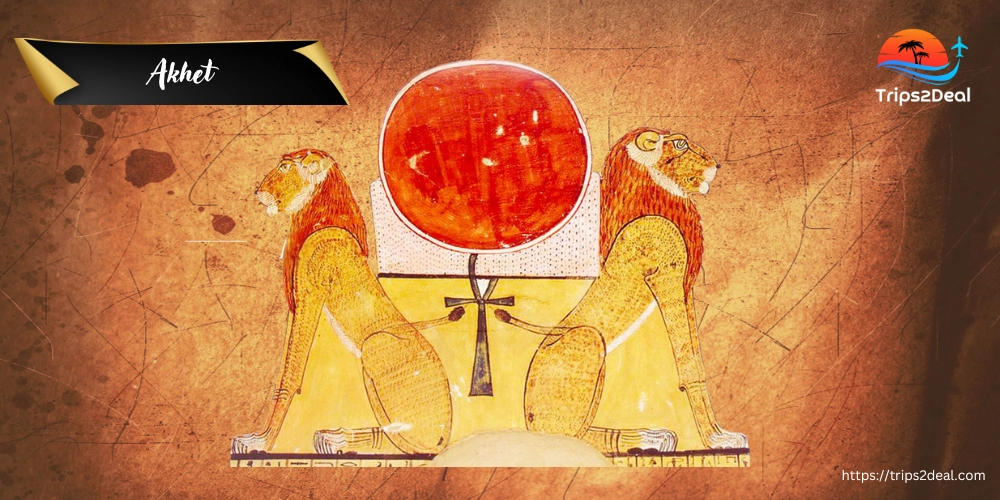
- Meaning: Akhet represents rebirth and renewal as it symbolizes the horizon where the sun rises and sets.
- Explanation: The rising sun god Ra had transformed Akhet into a powerful symbol of life and death cycles. It marked the mortal divine boundary reflecting universal birth on awakening. Two mountains depicted on it symbolize east-west entrances where the sun rises & sets down.
- Fact: The construction of pyramids is often connected with Akhet, which were considered symbolic representations of horizons through which pharaohs underwent their journey to join the sun god in the afterlife.
13. Lotus Flower
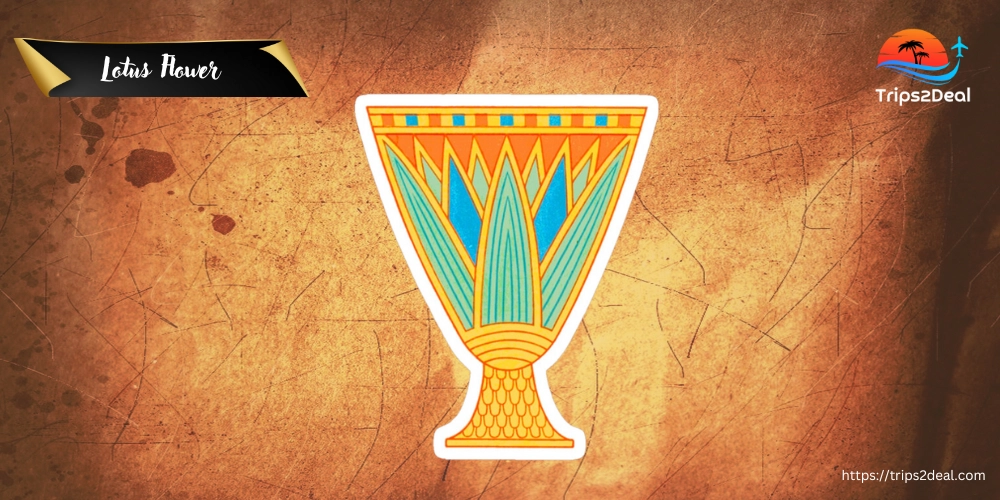
- Meaning: The Lotus Flower stands for rebirth, creation, purity, etc.
- Explanation: The lotus flower that closed at night and bloomed again during sunrise was used as a symbolizing tool for the Sun god’s activities in relation to creation as well as regeneration. In this regard, the lotus became highly associated with a myth that describes how the world emerged from primeval waters just like this flower blooms out of the Nile's water. Flower motifs are usually utilized when representing new beginning themes within art.
- Fact: They carry lotus flowers in their hands since they play roles concerning the generation of life forms especially when related to the sun-god Ra.
14. Papyrus
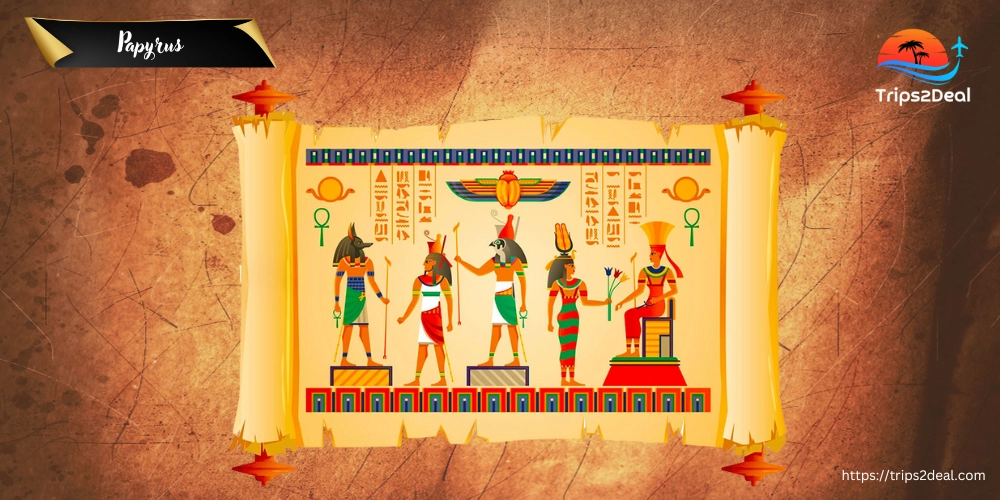
- Meaning: Papyrus stands for Lower Egypt, communication, knowledge
- Explanation: These plants grew along the Nile River and were used by ancient Egyptians for making paper – essential material for recording knowledge and religious texts or government orders. This plant itself has become a communication symbol and a learning process taking place in Egypt. Besides, it was also a sign of Lower Egypt often compared with the Lotus Flower denoting Upper Egypt and both were displayed in art.
- Fact: Many of the ancient Egyptian papyrus scrolls have been preserved through this, including texts like the Book of the Dead.
15. Crook and Flail
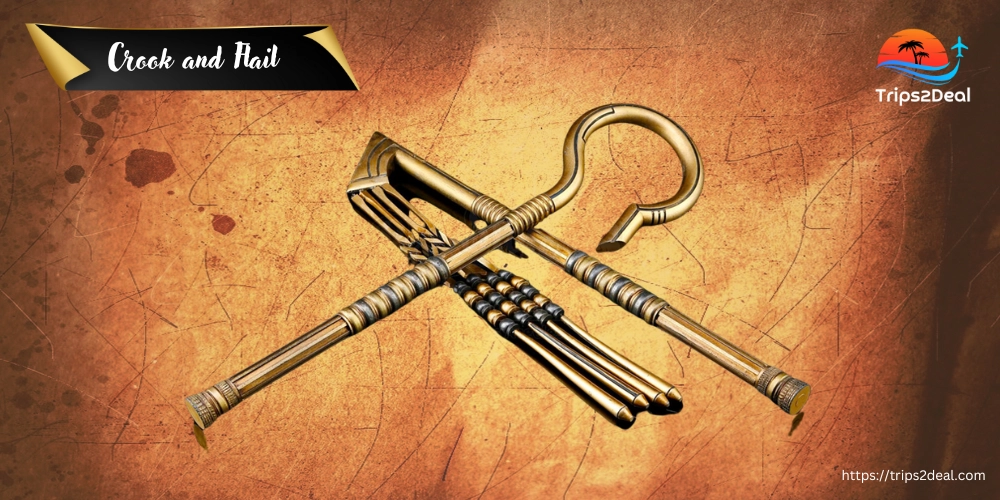
- Meaning: The Crook and Flail symbolize authority, kingship, and the dual role of the pharaoh as a shepherd and protector.
- Explanation: The Shepherd’s crook was originally used for guiding & guarding sheep and became a pharaoh who guided his people. In complementarity to it, flail shows that the king has the power to provide his subjects with food as well as punishment. These two symbols together embodied the divine right of pharaohs to rule over their kingdom maintaining order and prosperity within it.
- Fact: They are often depicted across the chest of statues or relieves crossing each other over their chests implying the divine authority they wielded and the responsibility they had as protectors.
16. Tyet (Isis Knot)
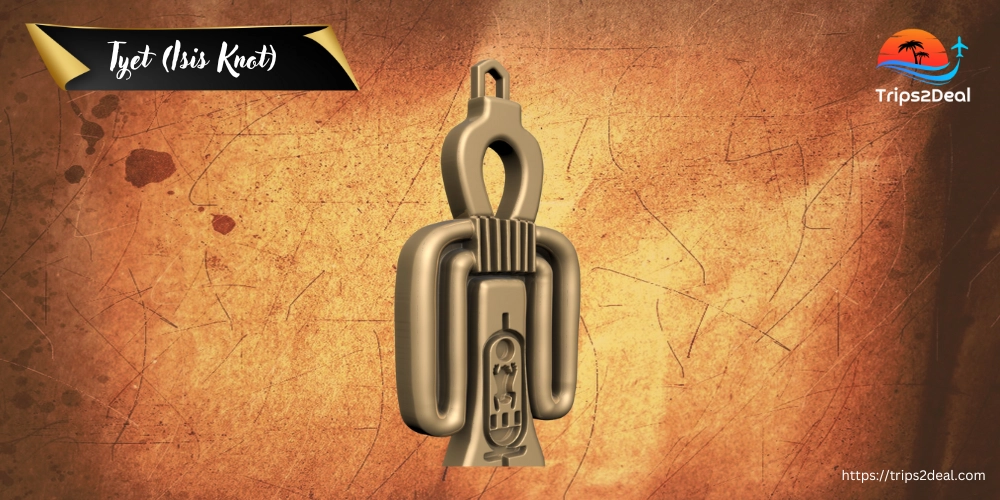
- Meaning: The Tyet, also known as the Isis Knot, represents safety, health, and life preservation.
- Explanation: It was associated with Isis, ankh-like with extra twists, who was popularly known for her role in protecting young mothers during birth. This charm was often made into an amulet that had safety powers to individuals and their families at large as they go about their daily activities.
- Fact: The Tyet was put on mummies and tombs in order to offer protection and blessings during their journey to the land of the dead.
17. Deshret
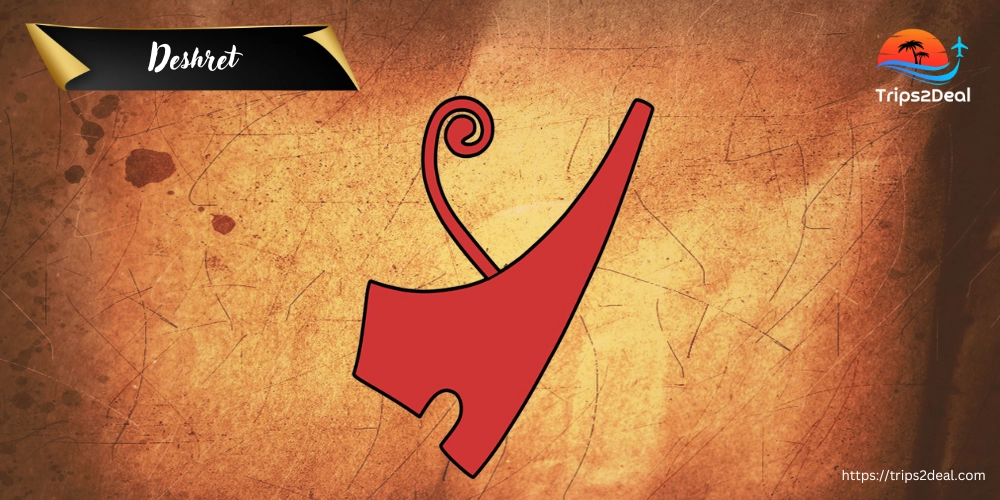
- Meaning: The Deshret is a representation of Lower Egypt’s authority or rule.
- Explanation: It was worn by rulers of lower Egypt who were considered to be the embodiments of the stateland. Being red signifies desert lands’ fertility and powerfulness is such a great protection against negative energies. This emblem served as an important indication that the northern part belonged to Pharaohs only.
- Fact: In royal iconography, the Deshret is usually juxtaposed with the white crown, the Upper Egypt crown, to show the distinctiveness between the political system and cultural values.
18. Hedjet ( The White Crown
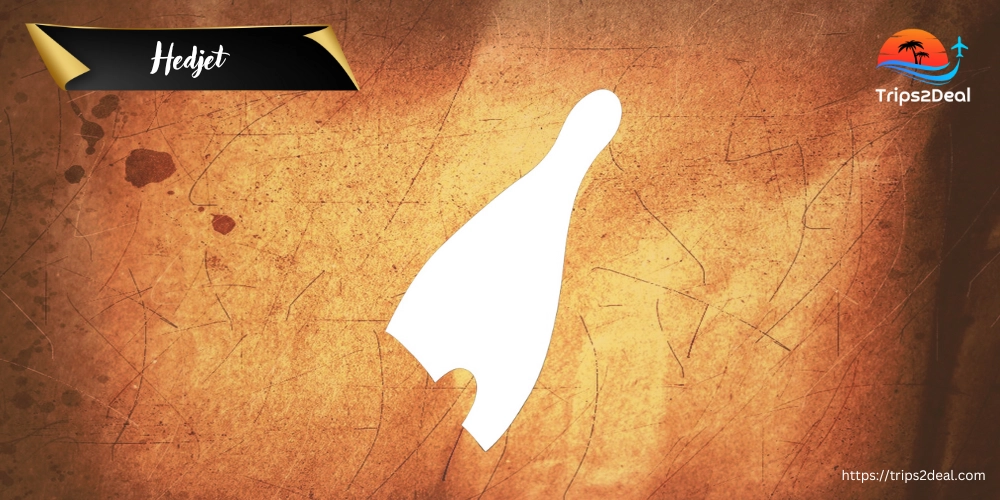
- Meaning: Hedjet signifies Upper Egypt’s monarchy and gods' presence in human form.
- Explanation: It is a symbol of sovereignty over southern parts worn by upper Egyptian rulers. Consequently, its white color has always been identified with sanctity, purity, and the divine realm that controls territories around the pharaoh’s kingdom.
- Fact: Frequently, it is a combination of this crown and the red crown (Deshret) to indicate that United Egypt had one ruler.
19. Pschent
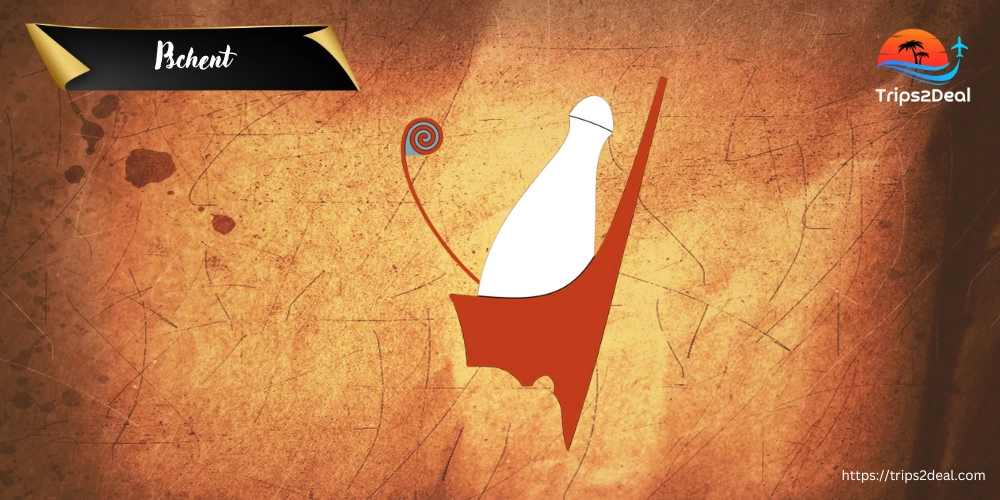
- Meaning: The Pschent symbolizes the unification of Upper and Lower Egypt and the divine rule of the pharaoh.
- Explanation: It was an all-inclusive display of what Egyptians would have considered as a united nation. From both settings, it could represent two worlds under the pharaoh’s reign where he would be responsible for everything.
- Fact: Therefore, its significance in terms of Pharaoh being viewed as the ultimate supreme power over all other gods is evident in royal regalia and iconography.
20. Sphinx
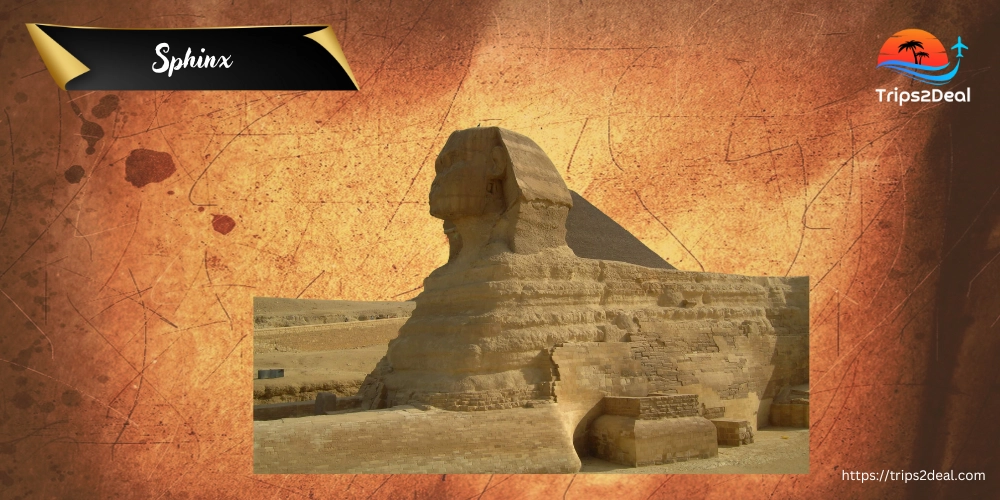
- Meaning: The sphinx symbolizes guardianship, mystery, and protection.
- Explanation: The Sphinx which was often illustrated with the body of a lion and the head of a pharaoh or deity was thought to protect sacred sites like tombs and temples. Its enigmatic nature and imposing presence was believed to serve as a deterrent to intruders and preserve their secrets..
- Fact: Sphinx was built to watch over the Giza Plateau to ensure the safety for pyramids as well as pharaohs’ tombs.
21. Ibis (Thoth)
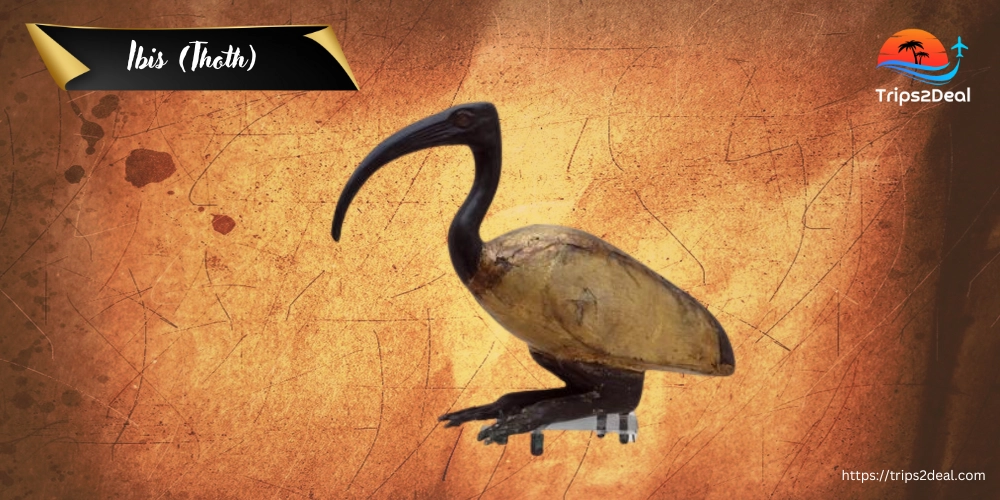
- Meaning: Ibis represents wisdom, knowledge, and writing.
- Explanation: Thoth represents wisdom, writing, and knowledge; therefore ibis birds were worshiped. Thoth took the form of an ibis-headed man who was believed to have invented writing and acted as a scribe for gods recording deeds by people on earth.
- Fact: Additionally Thoth also had an association with the moon where he protected scholars while they were still alive hence ibises became symbols of wisdom in ancient Egypt.
22. Falcon (Horus)
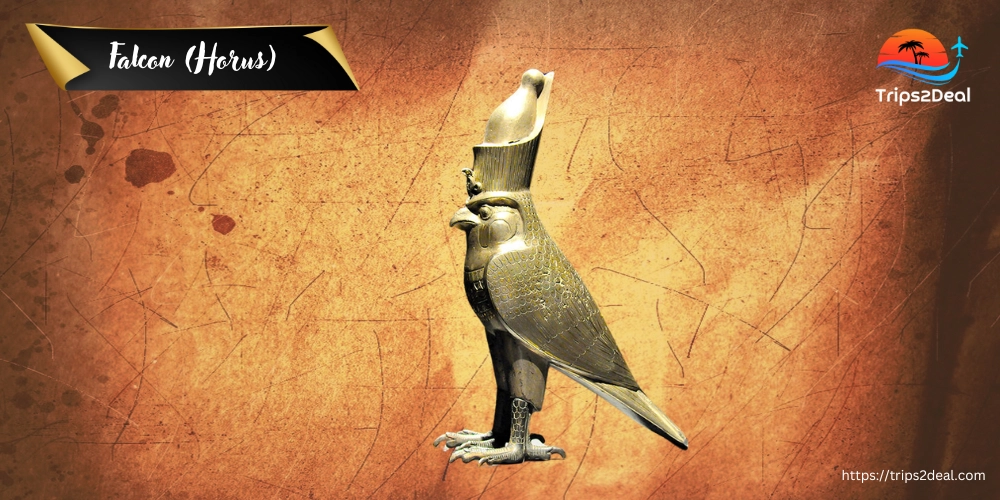
- Meaning: Falcon associated with horus signifies kingship, protection, or even skies.
- Explanation: Horus is considered the God of the sky and kingship takes falcon figuration sometimes its head. The falcon signifies Pharaoh’s divinely ordained authority besides protecting land against attackers. Apart from this, it’s seen through divine surveillance eyes safeguarding.
- Fact: Furthermore another related symbol called the Eye of Horus appears in many amulets plus protective charms used to prevent bad things from happening that may lead to poor health.
23. Vulture (Nekhbet)
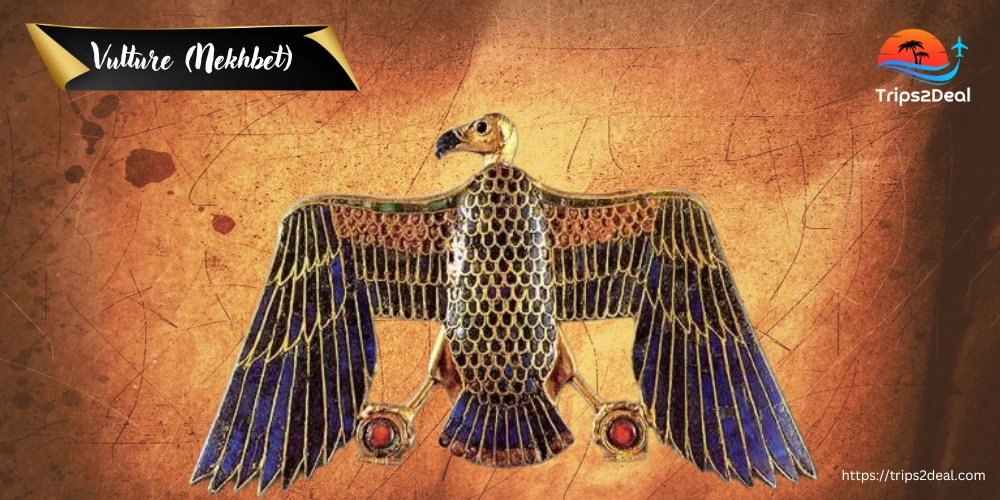
- Meaning: Vulture linked with goddess Nekhbet stands for protection, especially towards Upper Egypt plus kings.
- Explanation: Nekhbet believed that a vulture or woman with a vulture headdress represented the care and defense accorded by Pharaoh. She embodied maternal sheltering sort over Upper Egypt chiefly.
- Fact: Lastly in artworks or inscriptions vultures would usually be shown hovering above the pharaoh’s name or cartouche indicating that queenly support covered his reign.
24. Cobra (Uraeus)
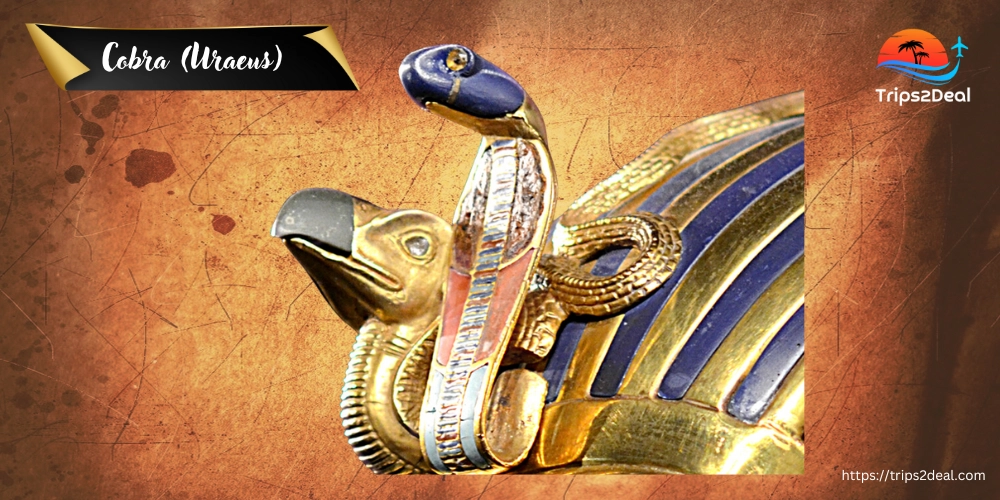
- Meaning: Cobra also known as Uraeus bears sovereignty, divine authority, and protection.
- Explanation: Uraeus is depicted in artworks as a rearing cobra that was worn on the forehead of pharaohs and deities. The snake’s posture symbolized the ruler’s power and authority as it stood in defense against enemies and evil.
- Fact: Moreover this was also one of the significant characteristics of royal regalia where Uraeus would spit fire to anyone who threatened the kingdom thus reinforcing the king's divine right and power.
25. Ra (Sun Disk)
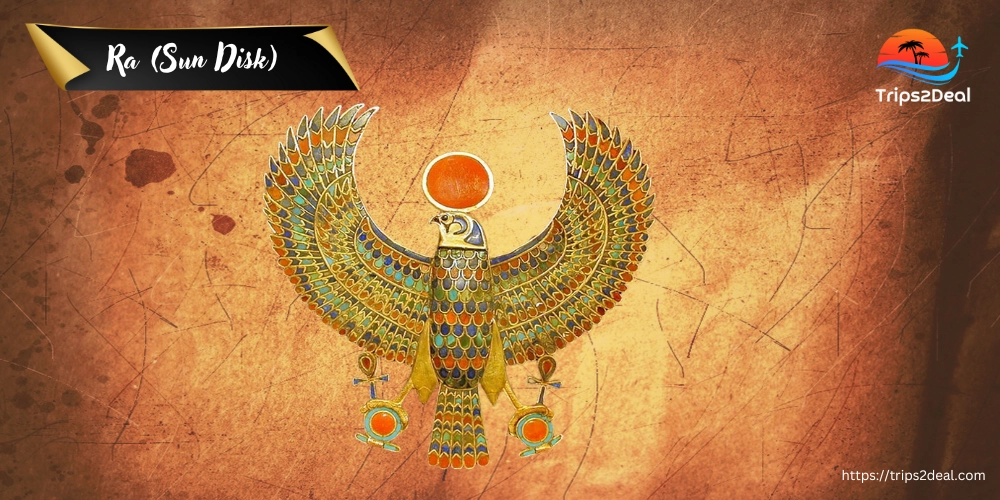
- Meaning: Ra takes the form of a sun disk representing him as God of Sun, creator, and power.
- Explanation: Ra is one of the most important gods in ancient Egypt who personifies the sun and its life-giving power. Every day, he was believed to sail across the sky in his solar boat enlightening and warming life.
- Fact: The Egyptian creation myth has centered Ra with a sun disk above his head as well as being its focal point where he created everything that exists today.
These materials were chosen not only for their physical properties but also for their symbolic meanings, ensuring that the symbols they created would carry their intended power and significance both in this life and the afterlife.



